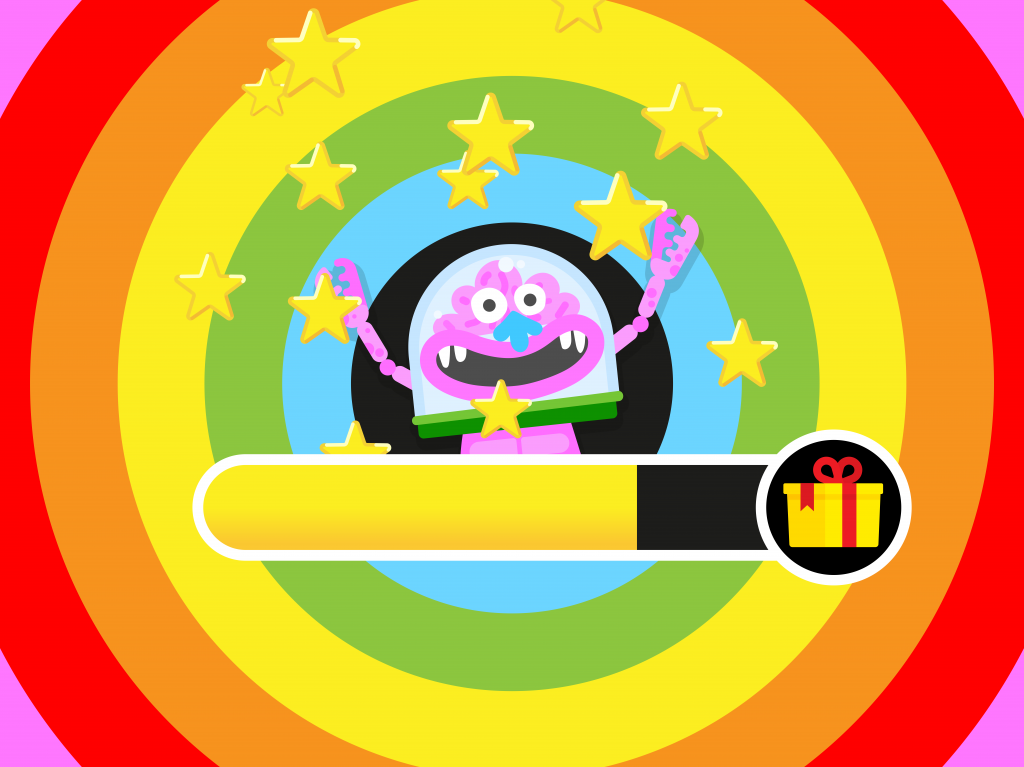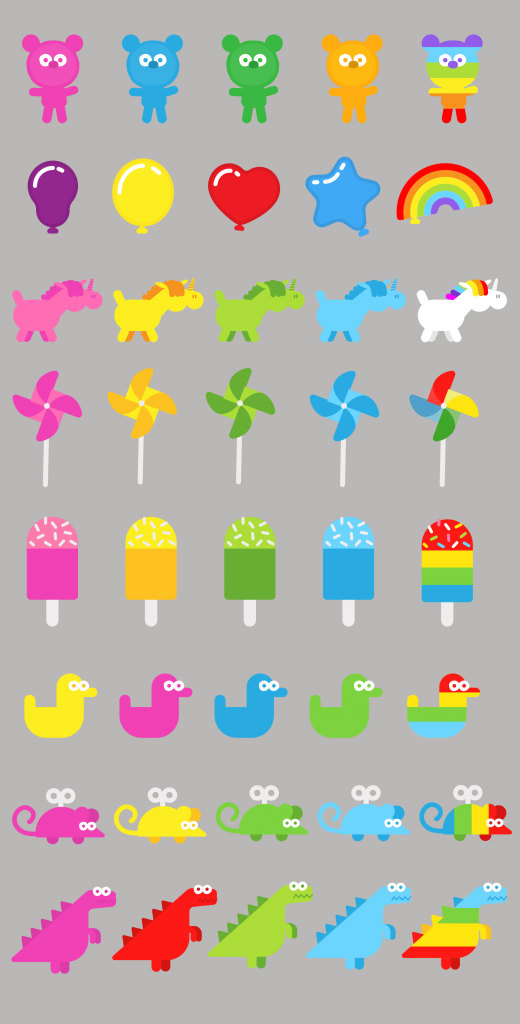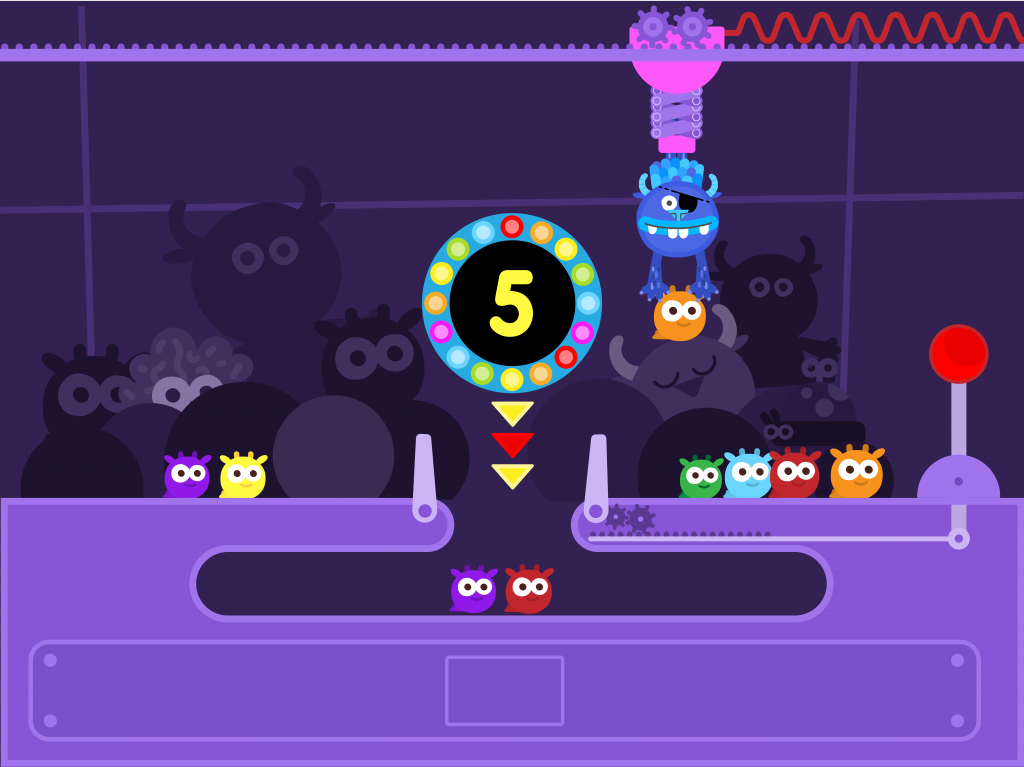
Remember all the excitement around the early days of Teach Your Monster to Read? Classroom walls were covered with monster paintings and drawings; children were busy talking about where their monster had come from and what they ate. Some teachers were making database of monsters as part of their ICT work, cataloguing the colours of hair (often green or purple) and the numbers of fingers and eyes (often excessive).
The monsters have returned and are working their magic with numbers. Right now, the developers of Teach Your Monster Number Skills are concentrating on nurseries and early years but they have secondary, especially KS3, in their sights.
Researcher Carla Vij said, ‘The monster is centre stage when we ask for feedback. Children are very imaginative and tell us about their likes and dislikes. The psychology behind the monster is complex. It might appear scary, but really it is an outsider and quite vulnerable, so children feel protective. It is like having a pet.’
The monster makes the game more personal for children. It is their companion on trips to the Number Park where they spend time on fairground rides and try out games, puzzles and activities all focused on numbers and mathematics.
A stand against the Knowledge Curriculum
In early years education, children need to develop a robust connection between numbers, sizes and quantities but it is not a simple process. It requires good teaching, plenty of varied practice and takes time. We now know that early spatial awareness can predict later mathematical achievement.
A recent study has reported that ball skills can predict progress in maths. This ability is known as ‘interceptive timing’ and might not be as surprising as it first appears: ‘The neural circuitry used to build up a child’s understanding of their external environment, the way they orientate themselves spatially… is also used to process numbers and more abstract thinking.’ (Mon-Williams, 2018). It is much more complex than just matching symbols to numbers or learning number bonds.
Concrete, Pictorial, Abstract
Bernie Westacott, mathematics consultant on the Usborne project, was an early advocate of the Singapore Maths pedagogy. This method focuses on CPA – Concrete, Pictorial, Abstract. The child might start starts with things they can see, touch and manipulate. Then they move to pictures which might include dice and dominoes and finally when they are secure in their knowledge, they move to using numbers to represent size and quantity.
‘CPA is not sequential,’ said Bernie, ‘although many UK teachers may think it is. The three modes of experiencing number work alongside one another. When we teach this way, we tend to interweave the three modes. I do a lot of practical and visual work with very young children before using the abstract i.e. symbolic mode. Children do not understand the numeral 2 until they are around three to four years old but attribute number to the two dots from a very young age. ‘
Singapore Maths puts an emphasis on mathematical discussion more, less, big. It is about developing key concepts and understanding relationships as well as learning and embedding skills. This approach gives children time to experience and develop mathematical understanding. It is in marked contrast to the current English Early Years curriculum. Thinking like a mathematician is a different stance from the Knowledge Curriculum favoured in the UK which currently has an Early Learning Goal of ‘automatic recall (without reference to rhymes, counting or other aids) number bonds up to 5 (including subtraction facts)’. More information is available here.
Developing a young mathematician

According to Professor Helen Williams, mathematics involves:
- Understanding relationships – how things fit together, how moving parts work
- Language – hearing, describing, directing; position, direction
- Spatial memory – where things are
- Sense of direction – finding your way back
- Spatial representations – creating mental images, composing and deconstructing; perspective and movement; understanding models, maps, diagrams
For young children, a range of construction and pattern-making tasks and making and discussing models and maps all contribute positively to the development of a child’s spatial awareness.
CPA may also involve their own particular passions as this example from USA home schooling shows: ‘One morning when I was trying to teach my kindergartener son his math lesson, he was not exactly interested in the math manipulatives I was using. He did, however, want to dig in the yard for worms and bugs. I decided to get a little creative. ‘Okay,’ I said, ‘You go and find all the worms and bugs you can find, and we will add worms plus bugs today.’ I have to admit, it wasn’t the most enjoyable lesson for me, but my son loved every minute of it, and he was adding worms and bugs in his head as he ran back and forth across the yard. The next day, I asked him to draw pictures of the worms and bugs we had found, and to remind me of how many we had. The following day, we took those pictures and turned them into numbers. Whether you’re home schooling or just trying to help your children succeed at school, there are so many fun and creative ways that you can cater to your kids’ specific interests and use the Singapore math method to help them master mathematical skills and have a great time doing it.’
The research on subitising
Young children have a remarkable skill: they can recognise numbers of things without counting. This is called subitising, and it develops from an early age. Young babies can not only tell the difference between one and two but also between large numbers of dots when there are twice as many in one group, as with 16 and 8 (Sarama, J., & Clements, D. H. (2009). Early Childhood Mathematics Education Research. New York: Taylor & Francis.).
Young children also have powerful visual memories and some may find it easier to remember images than words. Three-year-olds can recognise three things, although they may not say the word. Subitising can help children to build images for numbers, to visualise and to learn number facts. For instance, most four-year-olds readily learn to recognise five dots on a dice, which helps them to understand the cardinal value or ‘howmanyness’ of five, which they can link to the word and symbol for 5. Structured images like this also help children to begin to see numbers inside numbers, for instance seeing four and one within five.
Fingers provide subitisable images for numbers
They have the added advantage that they are embodied in muscle memory. Showing all-at-once finger numbers is the key skill here. Marton & Neuman (1990) found that older children with maths difficulties tended to count fingers one at a time, rather than using all-at-once ‘finger numbers’. You can ask young children to first ‘grow’, then ‘show’ and finally to ‘throw’ finger numbers.
To build perceptual subitising, you want to give students a lot of exposure to visual stimuli, such as patterns for three, four, and five or ten frames to recognize numbers like 5 and others. Children may only be able to subitise small numbers, but in time, they will be able to apply their understanding to constructing more elaborate patterns.
Monsters may encourage creativity
There is a lot of solid research behind the Teach Your Monster Number Skills approach: ‘Singapore continues to be one of the highest achieving jurisdictions thanks to its programme of continually evolving and refining their curriculum,’ said Bernie. This continual and evidence-based evolution is very different from the massive swings and seismic changes that have blighted the development of a coherent and successful Maths curriculum in England.’
Bernie hopes that the app will also serve as professional development for teachers and show them ways to be more creative and consistent in their maths teaching. Usborne also plans to provide teachers with digests of relevant research and videos ‘to show them what’s going underneath the bonnet’ so they come to realise that Teach Your Monster Number Skills is guided play rather than just free play.
Key attributes of the Teach Your Monster Number Skills app
- It provides fun, engaging practice
- Children can use it independently
- It is designed in collaboration with experts in early years mathematics
- 80 levels provide structured practice in addition, subtraction, counting, number bonds to 10 and more
- It is motivating because they have rewards which they can work towards
- They can collect prizes for their monster – lollies, hats, glasses
- They can collect new features for their park – dinosaur skeletons are popular as are fountains
- There is always a progression – getting to the next ride, getting to the next island, being able to unlock a box
- Gradually they create their own setting and make it more attractive so it becomes a special personal space to practise their number skills
Using Teach Your Monster Number Skills in schools
Carla Vij takes Teach Your Monster Number Skills into schools to test it out and get feedback. She finds that children don’t want their turn to end. ‘Teachers get super excited about the potential, especially when we show it on the interactive whiteboard,’ she said. One child who has special educational needs was really engaged but the teacher told me that they struggle to get him to focus more than a few minutes in class. She said that some children would benefit from having that quiet time, that extra practice away from the busy classroom.’
Teach Your Monster Number Skills came along at the right time for Stephanie McDonnell who teaches at New Milton Infant School in Hampshire in the infant department.
‘We follow the White Rose scheme and use real objects in the classroom as much as possible. But we found that most of the apps that were available, didn’t really match closely to what we wanted to offer children or were very American. We are careful about the technology we choose to use in school. We are very aware that children might spend a lot of time on technology at home, so we don’t want it to be a barrier between the teacher and the child.
With Number Skills the children like the fact that they have their own monster and they go to the fairground together. Each ride enables them to practise different number skills. It builds up gradually so they might start with a game that uses numbers one to three and then they might play the game again with numbers one to five, then again with numbers one to seven.

It matches very closely to our Reception curriculum because there’s a lot of emphasis on subitising and recognising quantities without counting them. We start with the concrete objects first, real life objects, moving things, counting things. All the groundwork happens in the classroom and once the children are really secure with those number skills using concrete objects, that’s when they’re ready to move on to the app.
We don’t use it to introduce new learning. We use it to practise and embed what they’ve learned with us, so that we know there will be no misconceptions.
The app helps them to make that connexion between the concrete objects and a pictorial representation of what they can see on screen. The game is really inviting, really enjoyable. The children love the colours and the sounds and it grabs their attention. They don’t really see that they’re practising their learning, they just think they’re playing on the iPad.
Using Teach Your Monster Number Skills has opened up different conversations. On one of their games, they have to hunt for the missing monsters and so there’s a 5 frame with some little monsters in place They say things like, ‘Ooh, That one has too many. There’s three, and I’ve only got 2 gaps.’They are talking about what they notice while they are playing; they are explaining their reasoning and how they’ve reached that conclusion. ‘
Teach Your Monster Number Skills is now available free for a limited time on all platforms.
To play online via your browser visit https://tym.st/ns-web
To play on iOS devices visit https://tym.st/ns-ios
To play on Android devices visit https://tym.st/ns-glp
To play on Amazon Kindle devices visit https://tym.st/ns-amz
Register for free
No Credit Card required
- Register for free
- Free TeachingTimes Report every month